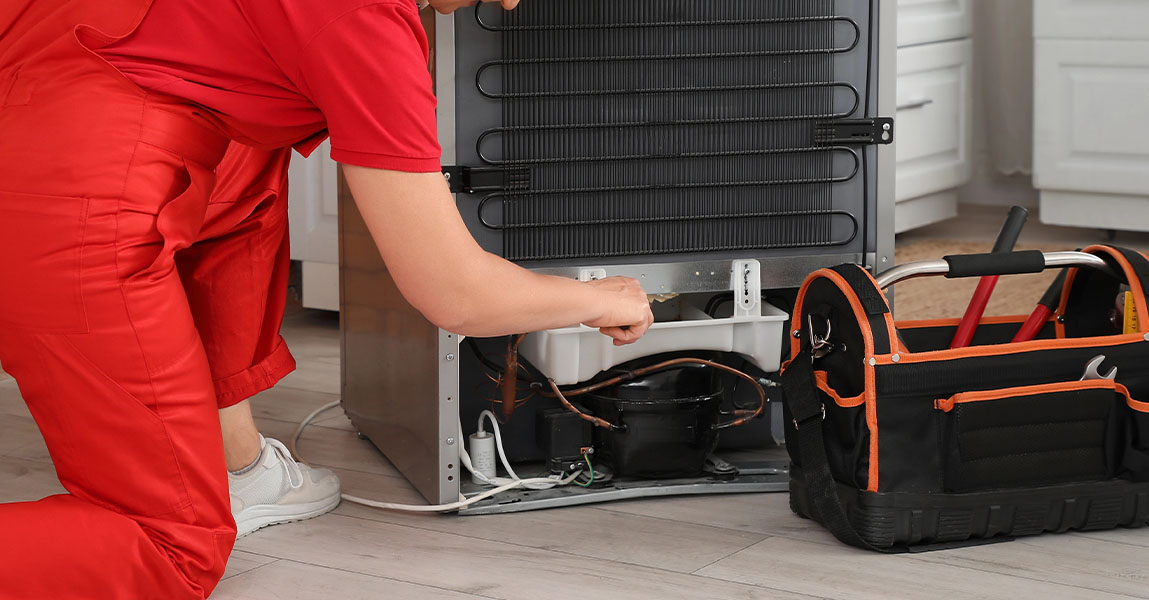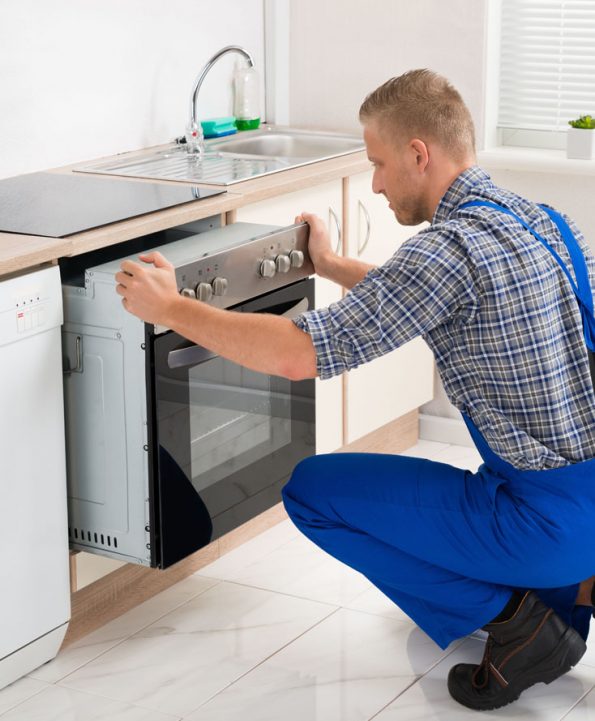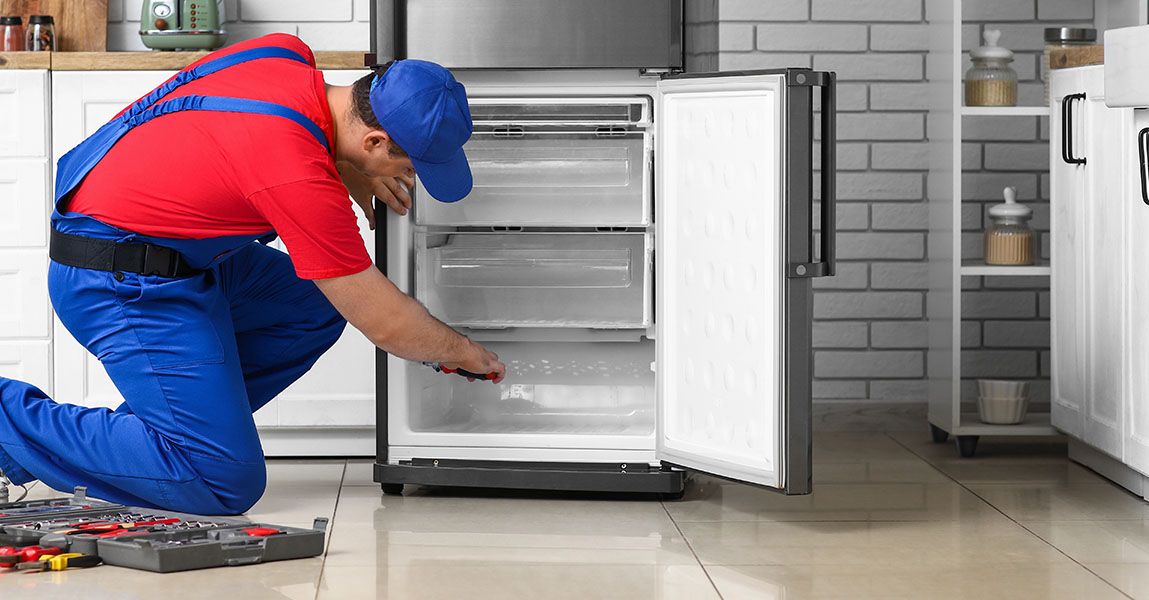Dryers rely on a complex electrical system to generate heat, spin the drum, and manage sensors that control cycles. When something goes wrong, the problem is often electrical rather than mechanical. Understanding what causes these issues and how professionals handle them can help us recognize when it is time to call for service and why safety should always come first.
Understanding How a Dryer’s Electrical System Works
Every dryer has three main electrical components: the power supply, internal wiring, and control system. The power supply connects to a 240-volt outlet that provides the energy needed for both heating and tumbling. Inside, the wiring carries this power to different parts like the motor, thermostat, and heating element. The control system, whether mechanical or digital, determines how much current flows and when each component activates.
When any of these parts fail or lose connection, the dryer can stop heating, refuse to start, or shut off mid-cycle. Electrical issues can range from simple to serious, but each one requires proper tools and caution. Unlike mechanical problems that may involve worn belts or bearings, electrical faults can carry risk of shock or fire if handled incorrectly.
Tripped Circuit Breaker or Blown Fuse
One of the most common reasons a dryer stops working is a tripped breaker or a blown fuse. Dryers draw a large amount of electricity, and if the circuit is overloaded, it shuts off automatically. Sometimes this happens because another heavy appliance shares the same circuit.
Technicians start by testing the outlet to confirm whether it still delivers power. If the breaker continues to trip after being reset, they check the circuit load and outlet voltage to ensure the electrical system can handle the dryer safely. They may also inspect the internal wiring to make sure there are no shorts or damaged connections that cause excess current flow.
Faulty Power Cord or Terminal Block
Power cords endure strain every time the dryer is moved or the plug is bent. Over time, wires can loosen or fray. The terminal block, where the cord connects inside the dryer, may burn or melt if the connection becomes weak.
A qualified technician disconnects the dryer, removes the back panel, and examines both the cord and terminal block. They test continuity with a multimeter to verify that power reaches the appliance correctly. If damage is visible, they replace both the cord and the terminal screws to ensure a solid and safe connection. Using the correct gauge of wire and tightening the connections properly are essential steps that prevent future overheating or sparking.
Heating Element and Thermal Fuse Problems
If the drum turns but clothes stay cold, the issue often lies in the heating circuit. Electric dryers rely on a heating element that glows red-hot to produce heat. This element can burn out after years of use or due to lint buildup restricting airflow.
Technicians unplug the dryer and use resistance testing to check whether the element is still intact. They also inspect the thermal fuse, which acts as a safety switch that cuts off power if the dryer overheats. If the fuse blows, the dryer will not heat until it is replaced. The key part of this process is diagnosing the cause of overheating, not just replacing parts. Professionals clear the vent and airflow path to prevent the same problem from happening again.
For anyone in the city looking for reliable service, professional appliance repair in Calgary covers these checks and ensures that dryers operate safely after repair.
Control Board and Timer Failures
Modern dryers use electronic control boards, while older ones depend on mechanical timers. Both can fail, but in different ways. A faulty control board may send inconsistent signals, preventing the dryer from starting or stopping properly. A worn timer may cause cycles to skip or run indefinitely.
When diagnosing these issues, technicians measure voltage at different points in the circuit. They test whether the board or timer sends power to the motor and heating system as designed. If the component fails to regulate current, it is replaced with a compatible model that matches the dryer’s voltage and load specifications.
This process requires precision, as incorrect wiring or installation could damage other parts of the machine. That is why experienced technicians rely on manufacturer diagrams and test procedures to ensure each wire connects exactly as it should.
Defective Start Switch or Door Switch
If the dryer will not start at all, a simple switch could be to blame. The start switch activates the motor, while the door switch ensures the dryer cannot operate with the door open. These safety switches may wear out after repeated use or fail due to debris and corrosion.
Technicians test each switch with a continuity meter. If either switch does not show proper electrical flow when pressed, it must be replaced. Replacing a door switch may sound simple, but it involves handling delicate wiring and ensuring that the new component seats correctly to maintain safety.
Wiring and Grounding Issues
Loose wires, melted insulation, or broken connectors can lead to intermittent problems that are hard to identify. Improper grounding is also a risk because it can cause mild shocks or damage to the control system.
Professionals trace wiring from the power input through each major component, looking for discoloration or burns that suggest overheating. They use insulated tools and non-contact voltage testers to confirm which wires remain live. Once identified, damaged wires are replaced, and connections are re-secured using approved terminals and insulating materials.
Proper grounding is one of the most overlooked aspects of electrical repair. A well-grounded dryer directs excess current away from the user and prevents static buildup that could ignite lint or dust.
Short Circuits and Electrical Burn Smell
Sometimes, homeowners notice a burning smell before the dryer stops working. This can result from a short circuit caused by damaged insulation or contact between wires and metal parts. When this happens, immediate action is necessary to prevent a fire.
Technicians disconnect the dryer from power and inspect the internal components for signs of arcing or melted plastic. They replace any damaged wiring and test all connections before restoring power. This step ensures that the issue does not recur once the dryer is back in operation.
Safe Practices Technicians Follow
Professional technicians follow strict safety procedures when working with electrical appliances. The first rule is to disconnect power before opening any panel. They also wear insulated gloves and use voltage testers to verify that no residual current remains.
When measuring live voltage, they use one hand at a time to reduce risk of current passing through the body. They stand on insulated mats and avoid touching metal surfaces. During repairs, they handle replacement parts carefully and ensure all connectors lock into place securely.
These precautions may sound simple, but they are critical to preventing accidents. Homeowners should avoid testing or repairing internal electrical components unless they are qualified, as even small mistakes can lead to injury or fire.
Preventing Future Electrical Problems
While some issues occur naturally over time, others result from poor maintenance or incorrect installation. There are several ways to minimize risk and extend the life of a dryer.
Keeping the lint filter and exhaust vent clean reduces heat buildup and prevents the heating element from overworking. Avoiding overloading the dryer prevents the motor and wiring from overheating. It also helps to check the outlet and plug occasionally for any signs of heat or discoloration.
Scheduling routine inspection with a professional ensures that potential electrical weaknesses are found early. Technicians can test wiring continuity, verify voltage stability, and clean internal components that collect lint and dust. Regular service not only improves efficiency but also protects the home from electrical hazards.
If your dryer shows signs like tripping breakers, burning smells, or inconsistent heating, it may be time to schedule dryer repair in Calgary to prevent further damage.
When to Call a Professional
Knowing when to stop troubleshooting and call a professional is key. If the dryer loses power repeatedly, makes crackling sounds, or smells like burning insulation, it is best to unplug it and seek help immediately. Replacing cords, fuses, and heating elements requires electrical knowledge that goes beyond basic home repair.
Electric dryers combine high voltage with heat and moving parts. A small mistake, such as crossing wires or using incorrect parts, can cause major damage. Qualified technicians have tools to measure exact voltage and diagnose safely.
If you need guidance or want to book a service appointment, do not hesitate to contact us for assistance.
FAQ
Why does my dryer keep tripping the circuit breaker?
This usually happens because of an overloaded circuit or a short inside the dryer. If the breaker keeps tripping even after being reset, a technician should check for wiring damage or motor problems.
Can I replace a thermal fuse by myself?
Replacing it may look easy, but the real issue is identifying why it blew in the first place. If airflow is restricted or the element overheats, the new fuse will fail again. A professional can inspect the entire heating circuit to fix the cause safely.
What should I do if I smell burning when the dryer runs?
Unplug the dryer immediately. A burning smell could mean wiring insulation or lint is overheating. Continuing to run it could start a fire. Have it inspected before using it again.
Why is my dryer running but not heating?
The problem could be a broken heating element, blown thermal fuse, or faulty thermostat. A technician can test each component with a meter to find the source and replace the defective part.
How can I prevent electrical issues in my dryer?
Clean the lint filter after every load, keep vents clear, and avoid overloading the machine. Have a professional check the dryer annually to ensure all wiring and components remain in good condition.






